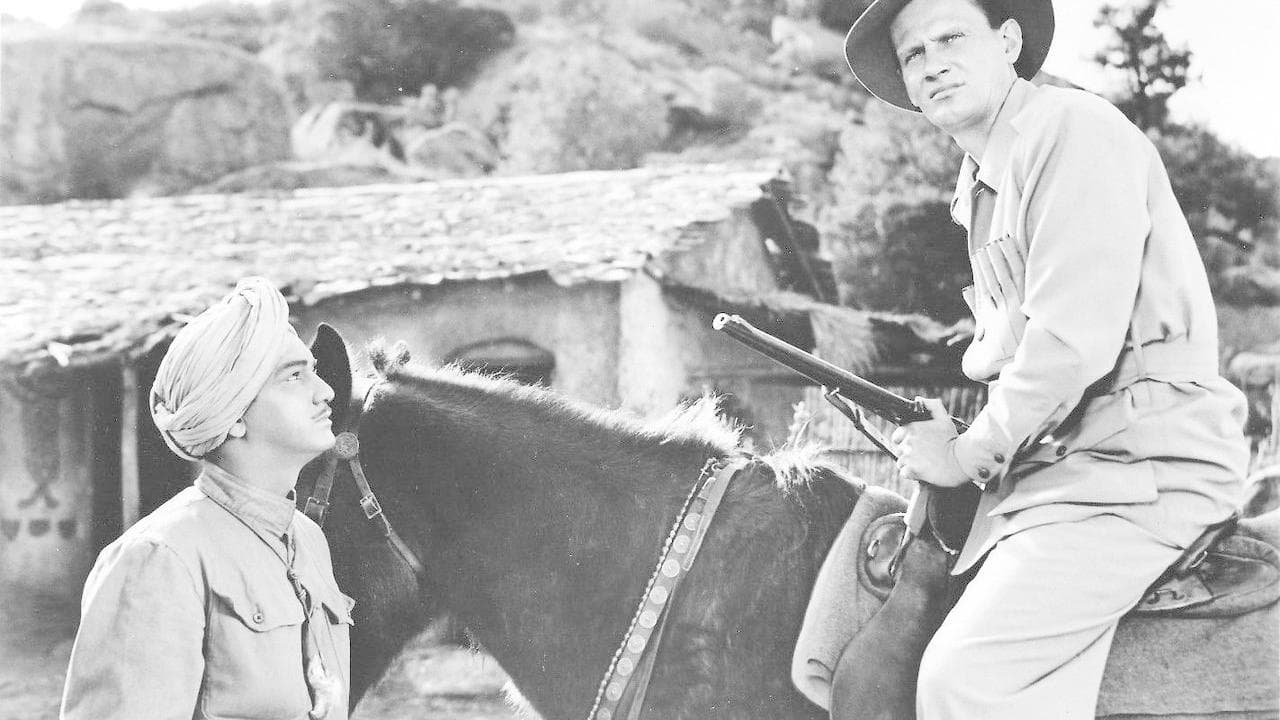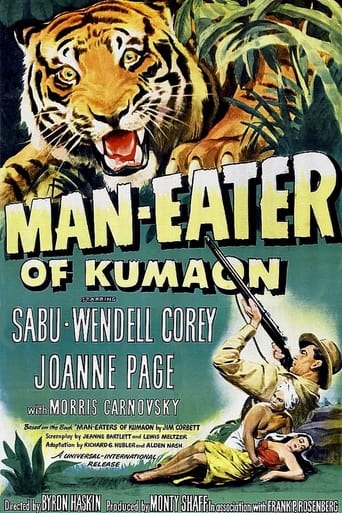

The greatest movie ever made..!
... View MoreStrong and Moving!
... View MoreIt's a movie as timely as it is provocative and amazingly, for much of its running time, it is weirdly funny.
... View MoreThe film's masterful storytelling did its job. The message was clear. No need to overdo.
... View MoreWendell Corey is a very disaffected doctor traveling through India. On a safari, he shoots at a tiger and blows off part of its paw--but the animal manages to escape. Now, injured, the tiger has a hard time capturing fast prey and resorts to catching a very slow one...people! Now you'd think Corey might feel a tad responsible for this, but he's so busy brooding and feeling sorry for himself (he's lost his wife and given up his practice). Later, however, after he gets to know the people, Corey cannot help but go back to the jungle in search of this man-hunter. And now, it's either him or the tiger...The one thing anyone will notice about the film is that apart from Sabu and one or two others, the rest of the Indian cast is made up of white and Hispanic actors in body paint. This is kind of offensive--perhaps they had trouble finding Indians (from India) in the States at that time, though I assume if they'd tried harder they could have. As the result of this and a script that seemed filled with the inevitable, it's only a minor time-passer. Not bad--just not particularly good.By the way, while you see a toucan in the film, they are only found in the Americas--not in Asia nor anywhere near it.
... View MoreTense direction, good acting by Corey and Sabu. Corbett was an animal rights enthusiast but shot and killed a lot of big cats in his day. Many Indian villagers owed their lives to him.Many people look at sadistic murderers and tigers in the same way, i.e., it's not their fault. This to me is sickening.Lovers of tigers need to know that tigers hunt and kill 300 villagers a year in the Sundabans mangrove swamps on the Bay of Bengal. Shamefully, the Indian government protects these tigers at the expense of its human population. This is not laudable to me. I'm sure PETA animal lovers would not wish to hunt wood in the swamps of the Sundabands, infested as it is with over 500 man-eating tigers.So much for the romance of the big cats.
... View MoreBack in the 30's and 40's of the last century, Jim Corbett held the place in the popular imagination later taken up by Jacques Cousteau: an adventurer and passionate crusader for conservation. His books were enormous best sellers so it was inevitable that one would be bought for the movies. "The Man Eaters [note the plural] of Kumaon" described every tiger he had seen or heard of who attacked a human being. In every case he found that the beast was sick or wounded and only killed humans because he was unable to hunt wild game. You may think it a lame effort to exonerate dangerous animals but keep an open mind and then try to figure out how to make such a book into a movie. There might be other ways but this one works marvelously.A man (an American doctor) shoots at a tiger just as night is falling. He knows he has hit but when he reaches the spot where the tiger lurked he finds one severed toe and a trail of blood. Out of cowardice (the sun is setting)or carelessness (what the hell, it's only a tiger) he abandons the wounded creature to its fate. That's the first two minutes of the movie, in case you miss it. From here on, while sticking rigorously to Corbett's thesis, the movie utterly abandons his narrative and follows almost exactly the storyline of Mary Shelley's "Frankenstein." If the movie is not more believable than her book, it is at least easier to understand. The monster has to kill to stay alive and isn't it right,just, even necessary, that it seek out the man who made it a monster? Especially in light of modern ideas about hunting in general and tigers in particular, this version is a lot easier to swallow than Shelley's Man vs. God allegory. I'll go so far as to say that the final scene is so right, so perfectly right, that Shelley would have used it in her book if she had thought of it.
... View MoreIn typical Hollywood style this film asserts that everyone in India is terribly spiritual and stiflingly serious. They wander about saying profound things about the meaning of life, while nobly suffering in poverty. Add to this a laughably sententious narration and an American on a spiritual quest (which somehow will be helped by shooting tigers)played without a shred of humour by Wendell Corey, and you have a pretty bad film.But there is the most wonderful tiger footage that makes sitting through the boring bits worthwhile. Well staged attacks on humans and animals, and a sensational sequence when the tiger fights a crocodile, are very exciting and beautifully photographed. No surprises that director Byron Haskin was one of the top cameramen of the silent era - it is when this film does not talk that it is at its best.
... View More